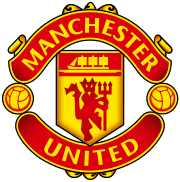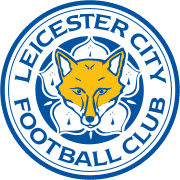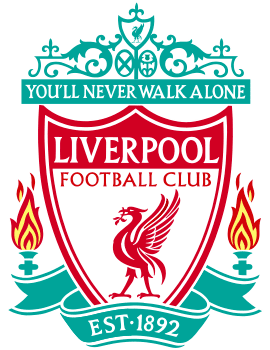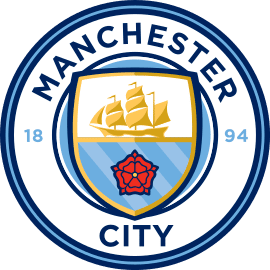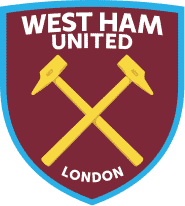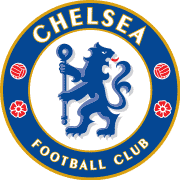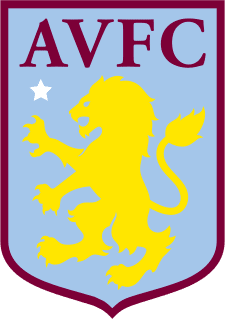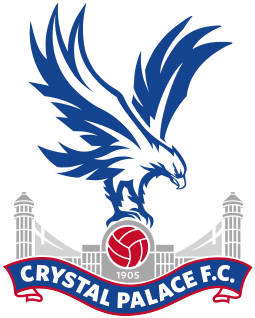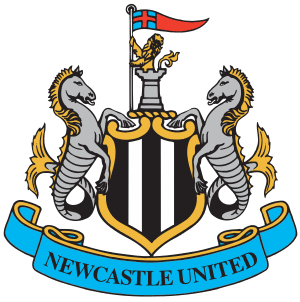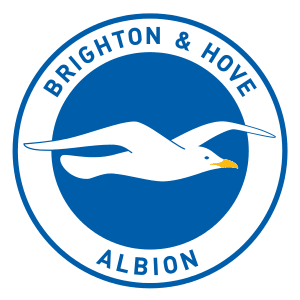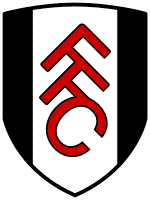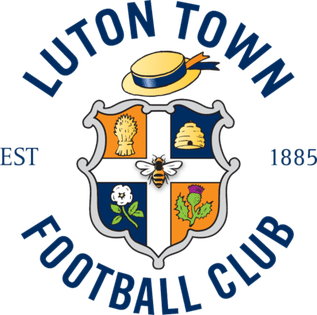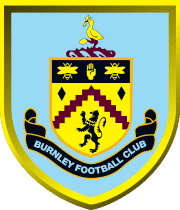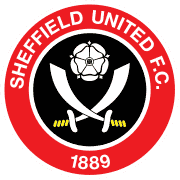Everton FC Tryouts & Club Guide: History, Stadium, Players, and More!

Welcome!
Discover the world of soccer with fcscout.com, your go-to scout for club tryout information, club guides, player profiles, in-depth product reviews, and more. We’re dedicated to exploring and revealing the best in each domain, empowering you with knowledge to make informed choices.
Thank you for being here!
Hi, I’m Carlos! A coach, sports enthusiast, and the founder of FCScout.com.
I fell in love with the game at a very young age like many of you. I’ve been following and playing soccer for many years.
Throughout my career, I always enjoyed helping soccer players chase their dreams, which is why I started this website. I wanted to reach a larger audience outside of my local area and fcscout.com was born.
This website is a platform I will be using to update club pages on any tryouts, stadiums, players, tech, and more from clubs around the world. I also create free recruitment profiles for players looking to have that extra competitive edge when reaching out to clubs.
That’s it. That’s my pitch for you to stick around (or browse the site as you please).
This is already too much text for a “see more” drop-down button thing. If you want to reach out to me, head on over to my contact page 🙂

Everton Football Club is an English professional football club based in Liverpool, England. The club competes in the Premier League, the top tier of English football.
Everton FC Youth Development System
ABOUT THE Everton FC ACADEMY
Proud of our past, focused on the future.
The ethos which runs throughout Everton Football Club, and a mantra encapsulated by its world-class Academy.
For decades, the Club’s youth system has been one of the most respected and renowned in football. And its vision to develop young players who are technically and tactically capable of playing for Everton or having a career in the professional game remains as focused as ever.

There is an enormous amount of planning, preparation and care invested in ensuring this progressive operation – overseen by Academy Manager Joel Waldron – functions so smoothly and prosperously.
Waldron is responsible for establishing the Academy’s culture, with its four principal tenets, which focus on family, ambition, determination and authenticity.
“These values are implemented from top to bottom of the organisation and employed as a tool to help develop good footballers and well-rounded individuals,” he explains. “The values underpin the day-to-day workings of our Academy: how we behave, how we represent our Club across the world of football and how we look after each other.”
Everton FC DEVELOPMENT
Everton remain at the forefront of the evolution of professional football academies, no longer comprising merely – in the words of Paul Tait – “recruitment, coaching… and that is it”.
Under-18 manager Tait is a key driver in the Professional Development phase of Everton’s Academy, the final leg on the journey for players making the transition from youth football into the professional ranks.
Everton FC THE PATHWAY
Sean Lundon nods furiously. Head of Academy Coaching Lundon has been asked if the Club’s proven faith in its young players is integral to the success of this formidable youth structure.
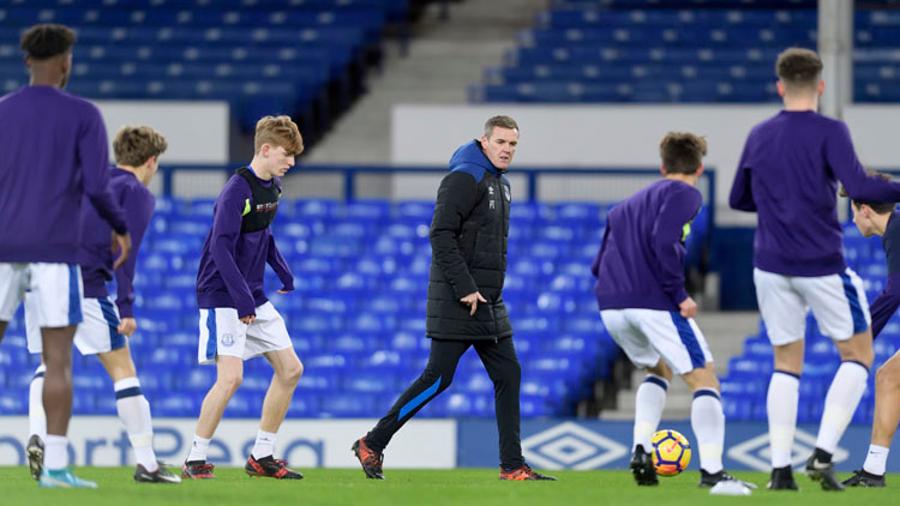
For the boys in the Academy, there can be no greater motivation than observing their predecessors playing first-team football for Everton. Equally, staff know the untold hours and emotional energy they sink into their work count for something very important.
This is not a club paying lip-service to developing footballers. Everton’s Academy is the lifeblood of the place. In addition to those seven homegrown first-team debutants in 2017/18, Tom Davies, Beni Baningime and Jonjoe Kenny established themselves in the senior squad, emulating a stack of alumni, including the likes of Wayne Rooney, Francis Jeffers, Leon Osman, James Vaughan and Tony Hibbert.
THE Everton FC COACHING PROGRAMME
Paul Bennett oversees the Pre-Academy phase for five to eight year olds, Kearney heads the Under-9-Under-12 model in the Foundation phase, the Youth Development phase for Under-13s-Under-16s is led by Simon Jennings, while Tait takes charge at Under-18 – the first stage of the Professional Development phase, which continues with David Unsworth’s Under-23s.
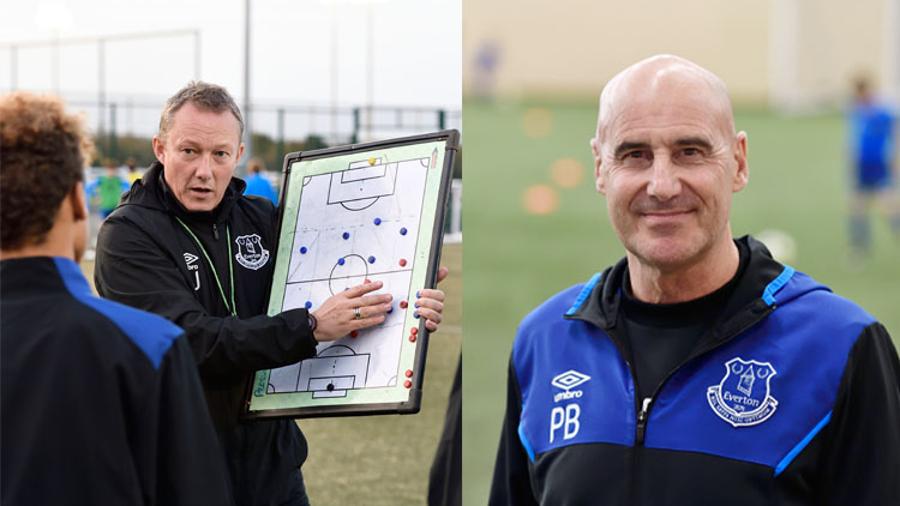
“It is all technical coaching in pre-academy,” says Bennett, whose players – or more accurately, perhaps, their parents – are still weighing up where their development will be best served once they are permitted to sign for a club aged nine.
“There are lots and lots of touches of the ball and detail on the techniques we are asking them to produce, but also ones they bring themselves.
“It is about receiving and striking the ball, using both feet and manipulating the ball, being able to protect it and dodge defenders.
“We want players who can handle the ball.”
THE GIFTED AND TALENTED PROGRAMME
The Everton Academy Gifted and Talented Programme is an initiative run by the Academy Recruitment Department.

This programme provides local schools and grassroots clubs with the opportunity to recommend any players who are deemed gifted and talented in football, or are all-round athletes, to attend a training session at Everton’s Youth Academy.
If you son has been recommended by his school to register for one of these events, please complete the registration form by clicking here.
Following his registration we will contact you with all the relevant sessions details.
All sessions are attended by Academy coaches and scouts.
Everton FC Academy Tryouts/Trials
The Everton Academy only holds specific trial dates for boys recommended by Club scouts.
If a player has not been approached by a scout but feel they are genuinely worthy of a trial then they are asked to write into the Academy providing as much information as possible about themselves and the club(s) they play for.
We will then endeavour to have the player watched by a Club scout.
Please use the following criteria as a guideline for information to be supplied when writing to the Academy:
- Current club/school
- Age group/date of birth
- Fixture lists (including kick off times and venues)
- Contact telephone number and address
If the player shows potential then he will be asked to attend one of our Development Centres for assessment, and further coaching by our Academy Development Officers.
However, if he is of an exceptional standard he may be invited straight into our Academy for a six-week trial period in accordance with Premier League rules.
We will make our interest in the player known by contacting the respective club at which he is registered.
All enquiries must be directed to:
Local Schoolboy Recruitment
Everton Youth Academy
Finch Farm Training Complex
Finch Lane
Halewood
Merseyside L26 3UE
*Please note that this trialist procedure applies only to residents within the north-west of England. Subject to Premier League Rule N.57, students in age groups Under 9 – Under 12 inclusive must reside within one hours’ travelling time and those in age groups Under-13 – Under-16 inclusive must reside within one and a half hours’ travelling time of our Academy facility.
To learn more, please click here.
Everton FC Academy Schools Experience
The Schools Experience sessions will give your child the experience of playing at our state-of-the-art training ground, while participating in a fun, engaging session that players of his age participate in on a weekly basis.
To register your son, please click here. This will take you through to the registration page which we ask you to complete in order to secure a place.
We will then be in contact regarding a time for your allocated session.
There is NO CHARGE for the event but please be aware that your son may only attend if they have been registered through the above link.
All events will be attended by Everton coaches and scouts. Any potential players will be recommended for a trial at Everton’s Youth Academy.
>>>CLICK HERE TO REGISTER YOUR SON NOW<<<
If you have any questions please do not hesitate to contact us by emailing [email protected].
Everton FC Soccer Schools
For the best time with a football outside of Goodison Park, why not sign your child up to take part in Everton in the Community’s Soccer School?
Run by trained coaches from the Club, the Soccer Schools offer young people the chance to develop their skills and learn new techniques in a safe, fun environment.
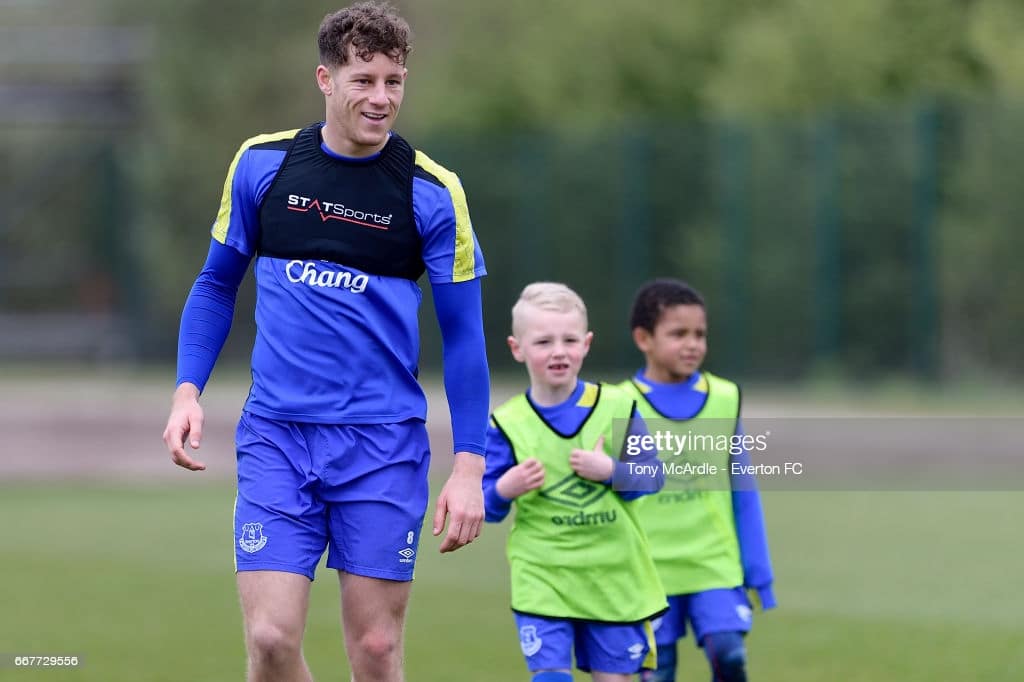
Children will be taught skills and techniques that have kept Premier League stars such as Richarlison, Lucas Digne and Jordan Pickford at the top of their game.
Mike Salla, Everton in the Community’s Director of Health and Wellbeing, said: “A typical day at a camp includes a proper ‘footballer’s style’ warm-up, skill sessions, penalty competitions, small-sided games, and water breaks of course!
“The last hour of each day consists of a tournament for the youngsters to show off their newly learned skills. Every day is carefully structured to give the children the opportunity to learn new techniques, to enjoy their football and meet new friends.”
Talent Spotting
Through Everton Soccer Schools, a small number of children are identified each year as either significantly improving over the course of the camp, or arrive on the first day with that extra talent already in place.
The Community coaches then recommend these gifted youngsters to Everton’s Youth Academy for trials and potentially a place in one of our Academy teams.
Please note: Taking part in one of the Soccer Schools does not guarantee recommendation to Everton’s Youth Academy.
For more information and to book, please call 0151 319 4072 or email [email protected] or use the link below.
>>>CLICK HERE FOR A FULL LIST OF ALL THE SOCCER SCHOOLS<<<
EXPLORE MORE CLUBS!
Explore more professional clubs by continent.
Everton FC History
St. Domingo Football Club was established in 1878 as Everton Football Club so that members of the congregation of St. Domingo Methodist New Connexion Chapel on Breckfield Road North, Everton may participate in sport throughout the year. During the summer months, cricket was the primary sport. The club’s debut contest was a triumph over Everton Church Club by the score of 1-0. When persons from outside the church expressed interest in joining the club, it was renamed Everton in November 1879 after the surrounding neighborhood.

The team became a charter member of the Football League in the 1888–89 season and went on to claim its first League Championship title the following season, 1890–91. Everton won both the League Championship and the FA Cup for the first time in 1914–1915. The FA Cup was won for the first time in 1906. Everton were on top of their game when World War I broke out in 1914, but the game was postponed as a result of the conflict. This was a situation that would recur in 1939. It wasn’t until 1927 that Everton experienced their first consistent era of success in their history.
Dixie Dean moved to the club in 1925 after being recruited from Tranmere Rovers. Dean broke the record for most goals scored in a single season in the top-flight league in 1927–1928. He scored 60 goals in 39 league games, which is a record that has not been broken since. Through his contributions, Everton was able to secure its third League Championship during that season. In spite of this, Everton Football Club was demoted to the Second Division just two years later due to internal strife within the organization. The club rapidly got back on its feet and scored a record number of goals while competing in the Second Division, which led to them being promoted to the First Division on their very first try.
Everton did not waste any time in reestablishing its prominence after returning to the top division in 1931–32, and they won their fourth League Championship at the very first opportunity they had. Everton also took home the FA Cup for the second time in 1933 after defeating Manchester City in the championship match by a score of 3-0. The season 1938–1939 was the final year of the era, and it ended with a fifth League Championship. As a result of the outbreak of the Second World War, league football was once again put on hold. By the time the war was over and official competition returned in 1946, the Everton team had been divided up and was not quite as strong as it had been before the war. Everton was demoted for the second time in the 1950–51 season, and the club did not achieve promotion back to the First Division until 1953–54, when it finished as the runner-up in its third season playing in the Second Division. Since then, the club has maintained a presence at the highest level. The year 1961 saw the beginning of Everton’s second period of sustained success, which was ushered in with the appointment of Harry Catterick as manager.
Everton won the League Championship in his second season in command, 1962–1963, while he was the manager. The club defeated Sheffield Wednesday 3–2 to win the FA Cup in 1966. The match took place that year. In 1968, Everton once again advanced to the championship game, but they were unable to prevail against West Bromwich Albion at Wembley Stadium. Everton won the League Championship in 1969–1970, two seasons later, finishing nine points ahead of their closest rivals, Leeds United. Everton was the first English team to participate in European competitions for a period of five consecutive years, beginning in 1961–62 and continuing through 1966–67. This span of time encompasses the years 1961–62 through 1966–67.
However, the squad was unable to maintain their success, as evidenced by their subsequent finishes of fourteenth, fifteenth, seventeenth, and eighth respectively. Harry Catterick retired, but his successors were unable to win any trophies for the remainder of the 1970s. This was despite the fact that they finished fourth in the 1974–75 season under the management of Billy Bingham, third in the 1977–78 season under the management of Gordon Lee, and fourth in the following season under the management of Billy Bingham. Lee was fired in the year 1981.
When Howard Kendall took over as manager of Everton, the club entered its most successful phase in its history. On the home front, Everton was victorious in the FA Cup in 1984 as well as the League Championships in both the 1984–1985 and 1986–1987 seasons. The club secured its first and, to this day, only European trophy when it was awarded the European Cup Winners’ Cup in the year 1985. This victory was in Europe. Following victories over University College Dublin, Fortuna Sittard, and Inter Bratislava, the team was able to achieve victory in Europe. Then, Everton overcame German heavyweights Bayern Munich 3–1 in the semi-finals, despite being behind at half time (in a match that was deemed the greatest in the history of Goodison Park), and recorded the same scoreline over Austrian club Rapid Vienna in the final. Everton won the competition.
Everton came very close to capturing a treble in 1985, but they were unable to do so because Manchester United defeated them in the FA Cup final. Everton won both the League and Cup Winners’ Cup that year. Everton finished in second place behind Liverpool in both the League and the FA Cup during the following season, 1985–86, but they were able to win the League Championship once again during the following season, 1986–87. Everton has missed the opportunity to compete for additional European titles as a result of the disaster that occurred at the Heysel Stadium and the consequent ban that was placed on all English clubs playing in continental football.
After receiving the suspension, a significant chunk of the team that had just won the championship disbanded. After leading the team to the championship in 1987, Kendall moved on to become the head coach at Athletic Bilbao, and Colin Harvey took over as his assistant. Everton’s run to the FA Cup Final in 1989, which they ultimately lost to Liverpool 3–2 in overtime, was led by Harvey. Everton was one of the original clubs to join the Premier League in 1992, but the club had a difficult time locating an appropriate manager. In 1990, Howard Kendall made a comeback, but he was unable to achieve the same level of success as in the past.
Mike Walker, who followed him as Everton manager, holds the record for the club’s least successful tenure to date. The club’s play began to improve after former Everton player Joe Royle took over as manager in 1994. In his first game in command, he led Everton to a victory over their local rivals, Liverpool, by a score of two goals to zero. Everton avoided relegation under Royle’s leadership, and the club won the FA Cup for the sixth time in its history by claiming a 1-0 victory over Manchester United in the tournament’s championship game.
The cup victory also qualified Everton for the Cup Winners’ Cup, the club’s first attempt at competing in a European tournament in the post-Heysel era. The team continued to improve under Royle during the 1995–1996 season, as seen by their ascent to sixth place in the Premiership. Following the next season, in which the team finished in fifteenth place, Royle decided to quit towards the close of the campaign. Dave Watson, who was the club captain at the time, filled in for him temporarily.
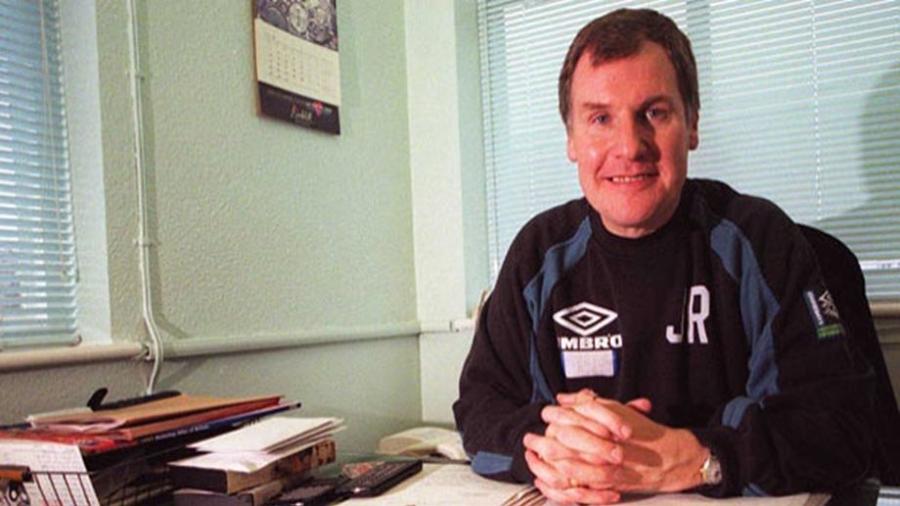
Everton finished in seventeenth place in the Premiership during Howard Kendall’s third and final stint as the club’s manager in 1997, notwithstanding Kendall’s hiring as Everton manager at that time. The only reason the team was able to avoid relegation was because of their better goal difference than Bolton Wanderers. Former Rangers manager Walter Smith succeeded Kendall as manager in the summer of 1998, however he was unable to avoid finishing in the bottom half of the table during his three seasons in charge. After Everton were eliminated from the FA Cup by Middlesbrough in March 2002 and were in serious danger of being relegated, the board of directors at Everton ultimately lost patience with Smith and fired him from his position as manager of the club.
David Moyes, who took over as manager when he resigned, led Everton to a secure fifteenth place finish. Everton had their best season since 1996, when it finished seventh overall in the 2002–2003 season. Before being transferred to Manchester United for a club record fee of £28 million in the summer of 2004, Wayne Rooney made his debut for the first team while Moyes was the manager of Everton. Rooney did so while Moyes was in charge. Everton automatically advanced to the qualification stage of the UEFA Champions League according to their fourth-place performance in the 2004–2005 season.
The team was eliminated from both the UEFA Cup and the Champions League after they were unable to advance to the group stage of the Champions League. Everton Football Club was able to compete in the UEFA Cup in both 2007–08 and 2008–09, and the club finished in second place in the 2009 FA Cup Final. During this time, David Moyes broke the record for the highest transfer fee paid by the club on four separate occasions. He did so by purchasing James Beattie for £6 million in January 2005, Andy Johnson for £8.6 million in the summer of 2006, Yakubu for £11.25 million in the summer of 2007, and Marouane Fellaini for £15 million in September of 2008.

Moyes left his position as manager of Everton at the conclusion of the 2012–13 season in order to become the manager of Manchester United. He brought staff members from Everton to join him at Manchester United in July (assistant manager Steve Round, goalkeeping coach Chris Woods, and coach Jimmy Lumsden), and Everton players Phil Neville and Marouane Fellaini also left for United, with Neville taking a position on the coaching staff. Roberto Martinez succeeded David Moyes as manager of Everton, and in his first season with the club, Everton finished fifth in the Premier League and amassed 72 points, which was the club’s highest point total in 27 years.
Martinez was fired after the season. The season after that, Martinez guided Everton to the round of 16 in the UEFA Europa League 2014–15, where it was ultimately eliminated by Dynamo Kyiv. At the same time, Everton finished 11th in the Premier League standings at home. During the 2015–16 season, Everton advanced to the semi-finals of both the League Cup and the FA Cup; however, they were ultimately unsuccessful in both competitions. Everton was in 12th place when they fired Martnez as manager after a string of disappointing performances in the Premier League. Martinez was let go after Everton’s penultimate game of the season.
Martinez was succeeded as manager of Everton in the summer of 2016 by Ronald Koeman, who had previously been the manager of Southampton but had departed to take a position with Everton on a three-year contract. After placing seventh, in his first year with the club, he led them to a spot in the third qualifying round of the Europa League, which allowed them to advance to the group stage of the competition. Following victories over Ruomberok and FC Haidjuk Split, the club advanced to the group stage of the competition; however, they were unable to go any further because they finished third, behind Atalanta and Lyon.
Everton was in danger of being relegated after nine games of the following season due to a terrible start to the season, and Ronald Koeman was relieved of his managerial duties on October 23, following a 5–2 home loss to Arsenal. Sam Allardyce was hired as the manager of Everton in November 2017, following a five-week stint in which David Unsworth served as the club’s interim manager. Despite being appointed manager, Allardyce left at the end of the season due to public displeasure with his playing style.
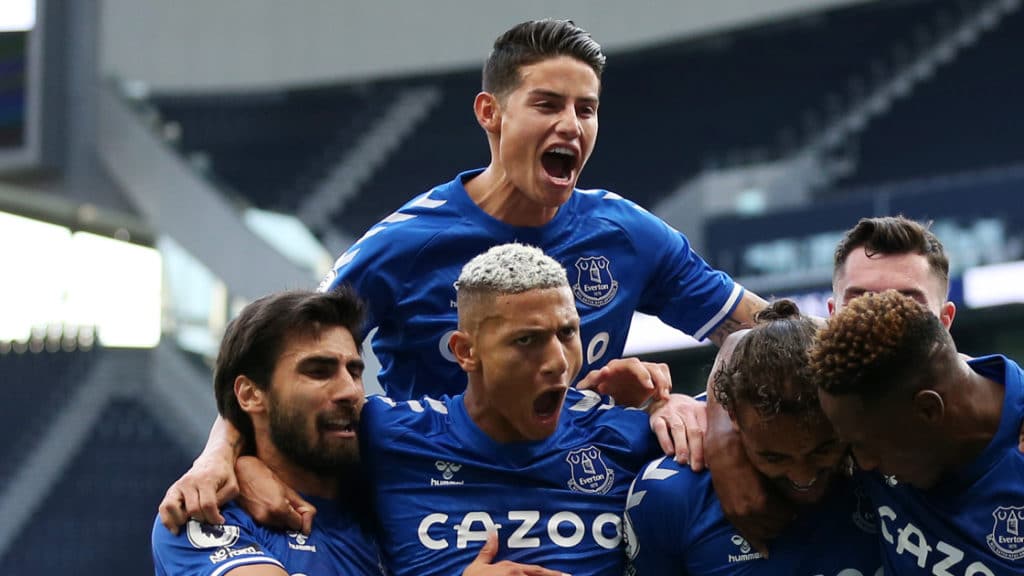
In May of 2018, Marco Silva was selected to lead Everton as manager. Everton was given a two-year suspension that prevented the club from signing academy football players from its minor clubs in November of 2018. Silva was fired from his position as manager of Everton on December 5, 2019, following a dismal start to the next season that put the team in the relegation zone with 14 points. In Silva’s first season with the club, Everton finished in eighth place under his leadership.
His most recent outing in the league was a loss to Liverpool by a score of 5–2 at Anfield. Duncan Ferguson, a former player and first-team coach, stepped in as caretaker manager for the next three games before his replacement, Carlo Ancelotti, was appointed on the 21st of December 2019, with Ferguson being appointed as assistant manager. Ancelotti was confirmed as manager on the same day.
Crest
Everton secretary Theo Kelly, who would go on to become the club’s first manager, expressed interest in creating a club necktie before the close of the 1937–1938 campaign. It was decided that blue would be the dominant hue, and Kelly would be in charge of creating a crest that would be embroidered on the necktie. He labored on it for a period of four months before settling on the idea of making a replica of the Everton Lock-Up, which is located in the core of the Everton neighborhood. Since its erection in 1787, The Lock-Up has had a close and inseparable relationship with the Everton neighborhood.
On Everton Brow, the structure that was originally used as a bridewell to imprison mostly inebriated people and low-level offenders is still standing today. Kelly chose to incorporate two laurel wreaths on either side of The Lock-Up because, according to the College of Arms in London, laurels are the symbol of winners, and The Lock-Up was accompanied by two laurel wreaths on either side. The motto of the club, “Nil Satis Nisi Optimum,” which translates to “Nothing but the best is good enough,” was displayed alongside the club crest. On the first day of the 1938–1939 season, both Kelly and Mr. E. Green, the chairman of Everton Football Club, wore the ties for the first time.
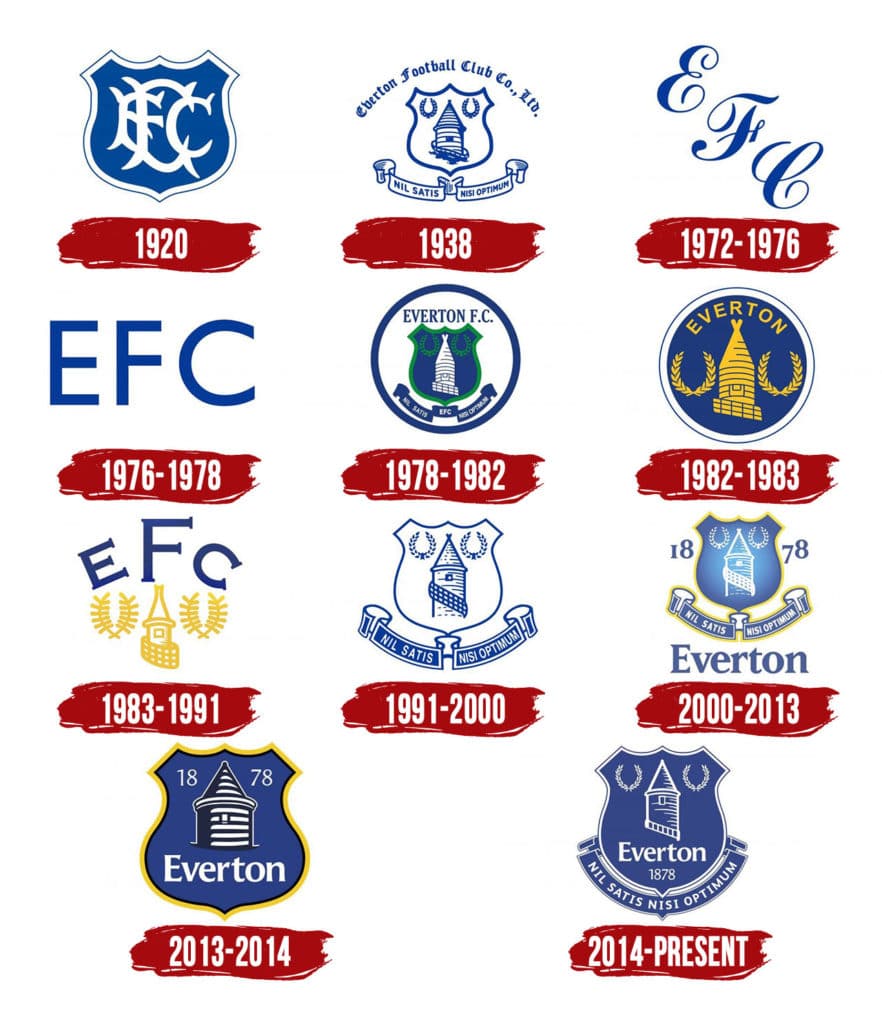
The shirts worn by members of the club were barely ever embellished with any kind of emblem. The club reverted to simple royal blue shirts between the years 1922 and 1930, and it wasn’t until 1972 that bold “EFC” lettering was reintroduced to the shirts. The interlaced “EFC” pattern was used between 1922 and 1930. The crest that Kelly developed was used for the first time on the team’s shirts for the first time in 1978 and has been there ever since, even though it has gone through progressive changes to become the one that is used today.
In May of 2013, the club introduced a new crest in an effort to improve the design’s replication in print and broadcast media, particularly on a smaller scale. This was particularly important for the club’s mascot. The number of colors had been cut down, and the radial effect had been eliminated, which resulted in the kit being able to be reproduced at a lower cost. As a result, critics speculated that the redesign was prompted by outside pressure from Nike, Inc., a company that specializes in the production of athletic equipment. The redesign was not well accepted by fans, as indicated by the result of a poll conducted on an Everton fan website, which showed that 91 percent of respondents disapproved of the crest. Before the club issued an apology and promised that a new crest would be produced for the 2014–15 season with an emphasis on fan consultation, a petition to oppose the club’s decision received more than 22,000 signatures. In a short amount of time after that, the club lost its Head of Marketing.
On October 3, 2013, the club unveiled their most recent crest to the public. After receiving feedback from the fans, the selection process narrowed down to three potential new crests. The new emblem, which was selected in the final ballot by about 80 percent of the supporters that participated, was first put into use in July of 2014.
Stadium
The original home field for Everton Football Club was located in the southeast quadrant of Stanley Park. In the year 1879, the first ever official match was played. A man named J. Cruitt made a donation of land on Priory Road in 1882, and this became the club’s permanent location. Everton Football Club became tenants at Anfield in 1884. At the time, the property was held by John Orrell, a landowner who was a friend of John Houlding, a member of Everton F.C. In exchange for a little rent payment, Orrell made Anfield available to the team. Everton’s rent increased from £100 to £240 a year by the year 1888, and it continued to rise until the club moved out of the ground in 1892. Houlding purchased the land from Orrell in 1885 and, in effect, became Everton’s landlord by charging the club rent.
Houlding became Everton’s landlord by charging the club rent. The club felt that the new higher rent was not acceptable in any way. As a result of an additional disagreement between Houlding and the club’s committee, Houlding made an attempt to acquire complete control of the club by registering the business known as “Everton F.C. and Athletic Grounds Ltd.” Everton moved their home games from Anfield to their new stadium in Goodison Park, where they have remained ever since. Houlding made an effort to assume control of Everton’s name, colors, fixtures, and league position but was unsuccessful due to opposition from The Football Association. In its place, Houlding established Liverpool Football Club (LFC).
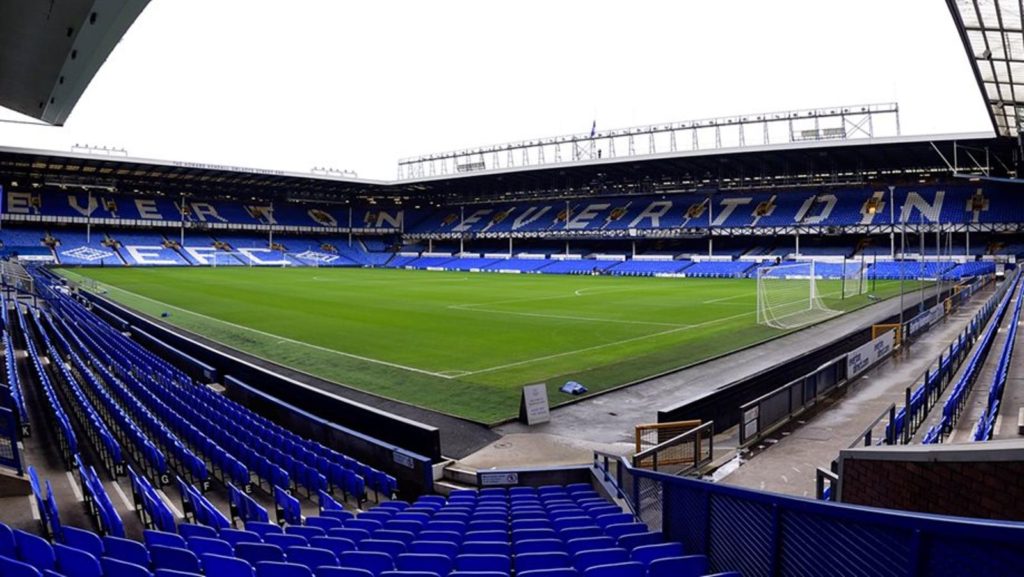
The year 1892 marked the opening of Goodison Park, which was England’s first major football stadium to be constructed. Goodison Park is the only English club ground to have hosted a semi-final during the 1966 FIFA World Cup and has hosted more top-flight football games than any other stadium in the United Kingdom. Goodison Park also holds the record for the most top-flight football games played at any stadium in the United Kingdom. In addition to being the first stadium in England to have under-soil heating, it was also the first stadium in England to have two tiers on all four sides. In close proximity to the intersection formed by the Main Stand and the Howard Kendall Gwladys Street End are the church grounds of St. Luke the Evangelist. On game days, the players walk out to the tune “Johnny Todd,” which is performed in the arrangement that was utilized when the song was used as the theme song for Z-Cars. This tradition dates back to 1962. It is a traditional children’s song from Liverpool that was gathered by Frank Kidson in 1890. The song relates the narrative of a sailor who is betrayed by his beloved while he is away at sea. Different songs were played when the club exited the building on two distinct occasions in 1994. During the month of August in 1994, the nightclub played “Get Ready For This” by 2 Unlimited. One month later, the club played an updated version of “Bad Moon Rising,” a legendary song originally performed by Creedence Clearwater Revival. Everton supporters were unanimous in their opposition to both songs throughout the match.
Ownership
Everton Football Club is organized as a limited company, and the majority of the club’s shares are held by the board of directors. The most recent set of financial records for the club, which date back to May 2014, reveals that it has a net total debt of £28.1 million, a turnover of £120.5 million, and a profit of £28.2 million. The “Basic Award Fund” of the Premier League is used as collateral for the overdraft that the club has with Barclays Bank. This fund is a guaranteed sum that is given to teams in exchange for them participating in the Premier League. In 2002, Everton reached an agreement with Bear Stearns and Prudential plc for a long-term loan with a total amount of thirty million pounds and a tenure of twenty-five years. Both the consolidation of debts at the time and a source of funds for the purchase of new players were accomplished with the assistance of the loan. The property at Goodison Park has been put up as collateral. On February 27, 2016, it was reported that Farhad Moshiri will purchase a share in the club equal to 49.9 percent of its total ownership.








